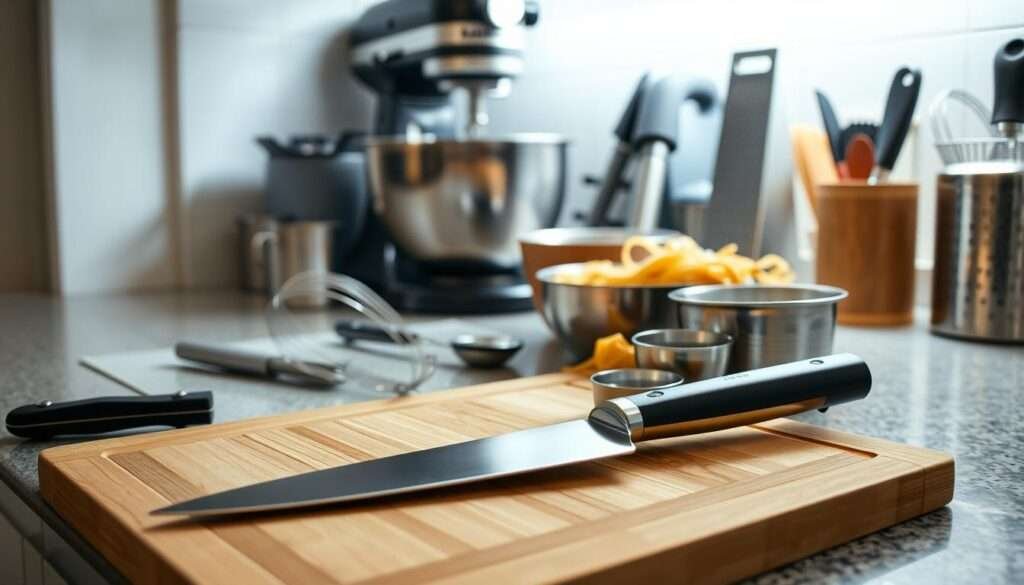There was a time when I relied heavily on takeout for quick dinners. One evening, after yet another soggy delivery, I decided to try making my own version of a favorite dish. That’s when I discovered how easy it is to prepare a homemade meal that rivals any restaurant.
This recipe is perfect for busy weeknights or when you’re craving something flavorful without the hassle. With just 10 minutes of prep and 30 minutes total cook time, it’s a lifesaver. Plus, it’s incredibly versatile—use whatever veggies or proteins you have on hand.
Unlike chow mein, which has a crispy texture, this dish features soft, chewy noodles coated in a savory sauce. It’s a family-friendly option that’s both economical and satisfying. Say goodbye to takeout and hello to a homemade meal that’s just as delicious.
Why You’ll Love This Chicken Lo Mein Recipe
Craving a quick, flavorful meal? This dish has you covered. It’s a 30-minute wonder that beats delivery wait times. Plus, it’s healthier than restaurant versions because you control the sodium and oil.
One of the best parts? You can customize it with any protein or veggies you have on hand. Whether you prefer shrimp, tofu, or beef, this recipe adapts to your tastes. It’s also a hit with kids—they love using chopsticks to slurp up the soft, chewy noodles.
The savory sauce is the star of the show. It coats every strand of noodles perfectly, making each bite irresistible. And if you’re short on time, you can prep the sauce ahead and freeze it for future meals.
Here’s a quick comparison to show why this dish beats takeout:
| Feature | This Recipe | Takeout |
|---|---|---|
| Time | 30 minutes | 45+ minutes |
| Customization | Use any protein or veggies | Limited options |
| Healthiness | Controlled sodium/oil | High sodium/oil |
| Kid-Friendly | Fun chopstick experience | Often messy |
With this recipe, you’ll never look back at takeout menus. It’s fast, flavorful, and fits your family’s preferences perfectly.
Essential Cooking Appliances, Tools, and Utensils
Having the right tools in the kitchen can make all the difference. Whether you’re stir-frying or prepping ingredients, the proper equipment ensures efficiency and better results. From a high-quality wok to a sharp chef’s knife, each tool plays a crucial role in cooking.
Below is a list of essential tools and their applications. These items are designed to handle high heat, prevent sticking, and make your cooking process seamless. If you don’t have a wok, alternatives like a cast iron skillet can work just as well.
Table of Tools and Their Applications
| Tool | Application |
|---|---|
| Carbon Steel Wok | Ideal for high-heat stir-frying and even cooking. |
| Chef’s Knife | Perfect for precise slicing of vegetables and proteins. |
| Spider Strainer | Great for draining noodles and other ingredients. |
| Cast Iron Skillet | An alternative to a wok for even heat distribution. |
If you’re using a new carbon steel wok, remember to season it properly. This process involves heating the wok with a thin layer of oil to create a non-stick surface. Proper maintenance ensures longevity and better cooking results.
Exact Ingredients for Chicken Lo Mein
The secret to a great dish lies in the quality and precision of its ingredients. For this recipe, I’ve carefully measured each component to ensure a balanced flavor profile. Whether you’re using fresh or dried noodles, the right combination of sauce, protein, and vegetables makes all the difference.
I recommend Twin Marquis brand noodles for their authentic texture. If you’re watching your sodium intake, opt for low-sodium soy sauce. Cornstarch is used to thicken the sauce, and for an extra umami kick, you can add a pinch of MSG.
Ingredients with Exact Measurements
| Category | Ingredient | Measurement |
|---|---|---|
| Sauce | Soy Sauce | 4 tbsp |
| Sauce | Sesame Oil | 1 tbsp |
| Sauce | Chicken Broth | 1/3 cup |
| Sauce | Sugar | 1 tsp |
| Protein | Chicken Breast | 1 lb, thinly sliced |
| Vegetables | Carrots | 1 cup, julienned |
| Vegetables | Garlic | 3 cloves, minced |
Feel free to swap out the chicken breast for tofu or shrimp if you prefer. The vegetables can also be customized based on what’s in your fridge. This flexibility makes the dish a go-to for busy weeknights.
How to Cook Chicken Lo Mein: Step-by-Step Instructions
Cooking at home doesn’t have to be complicated, especially when you follow simple steps. This dish comes together quickly with a bit of preparation and attention to detail. Let’s dive into the process to ensure your meal turns out perfectly.
Preparing the Sauce
Start by mixing the sauce ingredients in a small bowl. Combine 4 tbsp soy sauce, 1 tbsp sesame oil, 1/3 cup chicken broth, and 1 tsp sugar. Whisk until the sugar dissolves completely. This savory blend will coat the noodles and ingredients evenly, delivering rich flavor in every bite.
Cooking the Chicken and Vegetables
Marinate the protein in 1 tbsp soy sauce and 1 tsp sesame oil for 15 minutes. While it rests, heat 1 tbsp oil in a wok or skillet over medium-high heat. Add the marinated protein and cook for 3-4 minutes until browned. Set aside.
In the same pan, add another 1 tbsp oil and sauté the vegetables for 2-3 minutes. Keep the heat high to avoid overcooking. This ensures they stay crisp and vibrant.
Combining the Noodles and Sauce
Cook the noodles in boiling water for 2 minutes less than the package instructions. Drain and set aside. Return the wok to medium heat and add the prepared sauce. Toss in the noodles, protein, and vegetables, stirring gently to combine.
Cook for an additional 2 minutes, allowing the flavors to meld. Use a tossing motion to ensure the sauce coats every strand evenly. Serve immediately for the best texture and taste.
Tips for Perfect Chicken Lo Mein Every Time
Mastering a dish requires a few key techniques to ensure consistency. These pro tips will help you achieve the best results every time you cook.
First, slice your veggies and protein uniformly. This ensures even cooking and prevents some pieces from being overcooked while others remain underdone. A sharp knife is your best friend here.
When cooking noodles, undercook them slightly. They’ll finish cooking in the sauce, which helps maintain their texture. Rinse them in cold water to stop the cooking process and prevent sticking.
Use high smoke-point oils like avocado oil instead of olive oil. This prevents burning and ensures your dish stays flavorful. A touch of sesame oil adds a rich, nutty aroma.
To avoid overcrowding your pan, cook in batches. This gives each ingredient enough space to cook evenly and develop a nice sear. Overcrowding can lead to steaming instead of frying.
Finally, garnish with chopped scallions or sesame seeds for a fresh, visually appealing finish. These small touches make a big difference in presentation and flavor.
- Slice veggies and protein uniformly for even cooking.
- Undercook noodles and rinse in cold water to prevent sticking.
- Use high smoke-point oils like avocado oil.
- Cook in batches to avoid overcrowding the pan.
- Garnish with scallions or sesame seeds for added flair.
With these tips, you’ll create a dish that’s flavorful, balanced, and visually stunning every time. Keep these practices in mind, and you’ll never have to worry about inconsistent results.
Variations and Substitutions
Experimenting with ingredients can transform a familiar dish into something new. Whether you’re looking to switch up the protein or add more vegetables, this recipe is highly adaptable. Here are some ideas to make it your own.
For protein swaps, try shrimp, tofu, or flank steak instead of the usual choice. Each option brings a unique flavor and texture to the dish. If you’re craving something spicy, add a drizzle of sriracha or a spoonful of chili crisp for a fiery kick.
Vegetable variations are endless. Add zucchini, mushrooms, or bell peppers for extra crunch and color. Snow peas and bok choy are also great choices for a fresh, vibrant twist. These additions not only enhance the flavor but also boost the nutritional value.
For a gluten-free version, swap regular soy sauce with tamari. This simple change ensures the dish fits dietary restrictions without compromising taste. If you’re in the mood for something different, try a chow mein adaptation with crispy noodles for a delightful crunch.
- Protein swaps: shrimp, tofu, or flank steak.
- Vegetable variations: zucchini, mushrooms, bell peppers, snow peas, bok choy.
- Spicy version with sriracha or chili crisp.
- Gluten-free option using tamari.
- Chow mein adaptation with crispy noodles.
For more recipe ideas, check out this 30-minute cheesy broccoli cheddar pasta bake. It’s another quick and delicious meal option that’s perfect for busy weeknights.
Storing and Reheating Leftovers
Leftovers can be just as delicious as the original meal if stored and reheated properly. With a few simple techniques, you can enjoy your dish for days without losing flavor or texture. Here’s how to make the most of your leftovers.
First, store your meal in an airtight container. This keeps it fresh in the fridge for up to 4 days. Avoid freezing cooked noodles, as they can become mushy when thawed. Instead, focus on fridge storage for the best results.
When reheating, use a pan for the best texture. Add a splash of water to the pan and heat your dish over medium heat. This helps prevent drying and keeps the noodles soft. If you’re short on time, the microwave works too. Cover your meal with a damp paper towel to retain moisture.
To refresh leftovers, toss in some fresh veggies. This adds crunch and boosts the flavor. It’s a simple way to make your dish feel new again.
| Method | Steps | Tips |
|---|---|---|
| Pan Reheating | Add a splash of water, heat over medium heat. | Stir frequently to prevent sticking. |
| Microwave Reheating | Cover with a damp paper towel, heat in 30-second intervals. | Check and stir between intervals. |
| Storage | Use an airtight container, store in the fridge. | Consume within 3-4 days. |
With these tips, your leftovers will stay fresh and flavorful. Say goodbye to wasted food and hello to delicious second helpings!
Explore More Delicious Recipes
Looking for more ways to spice up your dinner routine? I’ve rounded up some fantastic recipes that are sure to impress. Whether you’re craving something crispy, spicy, or vegetarian, there’s something here for everyone.
Try the Beef Chow Mein for a crispy noodle alternative. It’s packed with flavor and perfect for a quick meal. If you’re leaning toward a meatless option, the Vegetarian Lo Mein with mushrooms is a hearty choice.
For a spicy twist, the Korean Gochujang Chicken is a must-try. It’s bold, flavorful, and easy to prepare. If you’re short on time, the Shrimp Fried Rice comes together in just 15 minutes using pantry staples.
Finally, the Sesame Garlic Ramen is a budget-friendly upgrade that’s rich in flavor. These recipes are versatile, delicious, and perfect for any night of the week.



